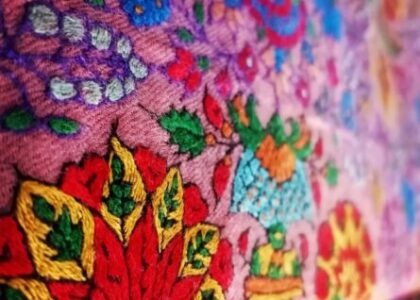What is Pashmina Shawl?
The Timeless Elegance of Pashmina Shawls
Pashmina shawls, often regarded as the epitome of luxury and elegance, have a rich history intertwined with tradition, artistry, and culture. Originating from the Himalayan regions of India, Nepal, and Pakistan, these shawls are cherished worldwide for their unparalleled softness, warmth, and intricate craftsmanship.
The Origin and Craftsmanship
The word Pashmina derives from the Persian word “Pashm”, meaning wool. This wool is sourced from the undercoat of the Changthangi goat, a breed native to the high-altitude regions of Ladakh in India. These goats develop a soft undercoat to withstand freezing temperatures, making their wool an excellent natural insulator.
The process of making a Pashmina shawl is meticulous and labor-intensive. Artisans hand-spin the delicate wool into fine threads using traditional tools, a skill passed down through generations. The weaving process, done on handlooms, is equally painstaking, with weavers ensuring each shawl is flawless. After weaving, the shawls often undergo embroidery by master craftsmen, who use fine silk threads to create intricate patterns.
Unique Characteristics
Pashmina shawls are celebrated for their exceptional qualities:
- Softness and Warmth: The wool’s fine fibers (measuring between 12-16 microns) make Pashmina shawls softer and lighter than regular wool products, yet incredibly warm.
- Handmade Excellence: Authentic Pashminas are entirely handmade, ensuring uniqueness in every piece.
- Artistic Embellishments: Many Pashmina shawls feature hand-embroidered motifs, often inspired by nature, such as flowers, leaves, and paisleys.
Cultural and Historical Significance
Pashmina shawls have been prized possessions of royalty and nobility for centuries. In the Mughal era, they were considered status symbols and were gifted as tokens of esteem. Over time, these shawls became synonymous with sophistication and cultural heritage, transcending regional boundaries to earn a place in global fashion.
Sustainability and Ethical Considerations
Pashmina production is inherently sustainable, relying on natural resources and traditional methods. The wool is combed from the goats during molting season without causing harm. However, the demand for authentic Pashmina has led to concerns about exploitation and counterfeit products. To protect artisans and maintain authenticity, the Government of India introduced the Geographical Indication (GI) tag for Pashmina shawls.
Styling and Modern Appeal
Pashmina shawls seamlessly blend tradition with modernity. They are versatile accessories, perfect for formal occasions or casual outings. Whether draped over an evening gown or paired with a winter coat, a Pashmina shawl adds sophistication to any ensemble.
Preservation and Care
Proper care is essential to maintain the quality of a Pashmina shawl. They should be dry-cleaned, stored in breathable fabric bags, and kept away from moisture and moths.
Conclusion
Pashmina shawls are more than just garments; they are timeless works of art that embody heritage, craftsmanship, and elegance. Owning a Pashmina is not just a fashion statement but also a celebration of an ancient tradition that continues to thrive in the modern world.



